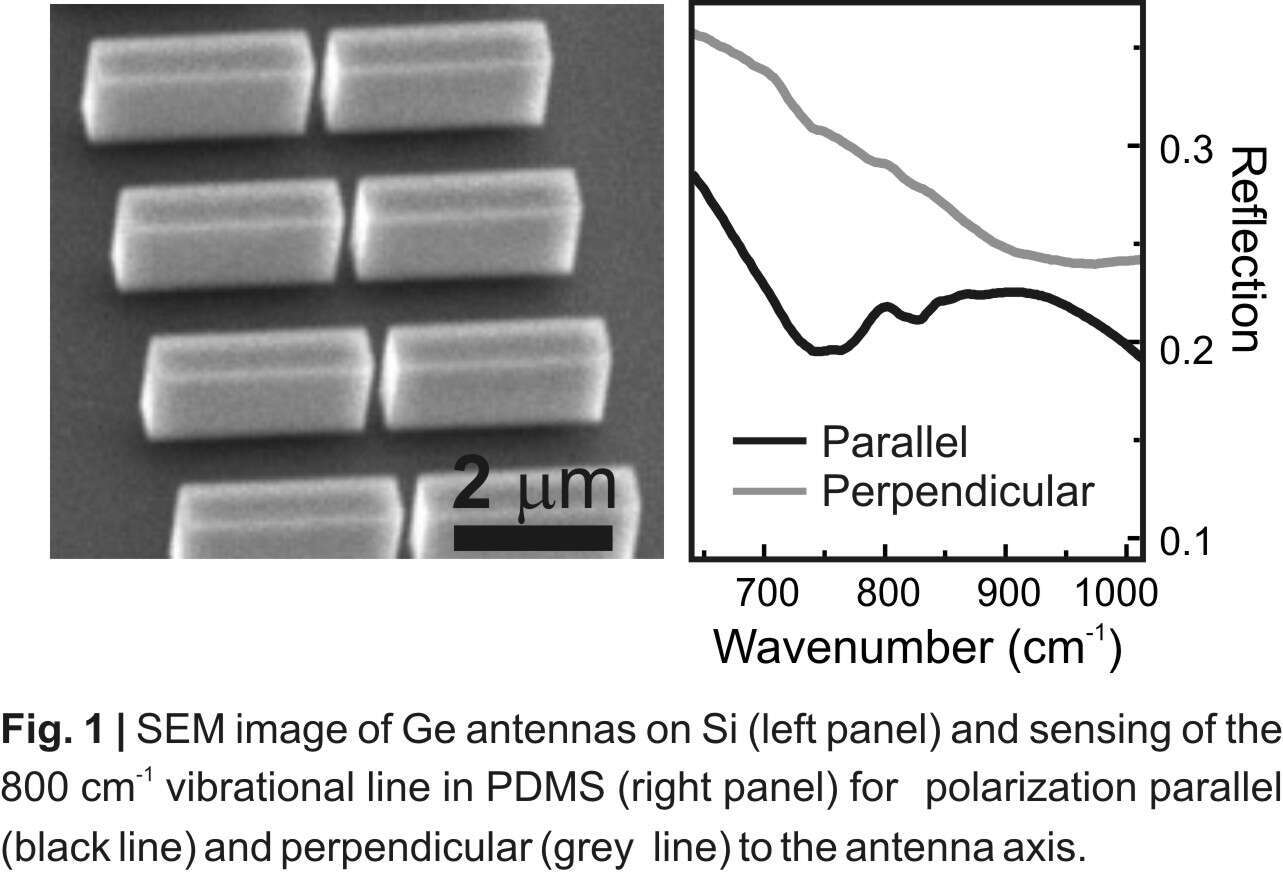
Mid-Infrared Sensing with Germanium Antennas on Silicon
The quest for novel plasmonic materials has been a lively area of research over the last few years. In the mid-infrared (mid-IR) spectral region, in particular, localized plasmon resonances in nanoparticles and nanoantennas hold promise for enhanced IR spectroscopies, with key applications in biology, medicine, and security. In this frame, the development of a CMOS-compatible plasmonic platform in the mid-IR could have disruptive effects for future technologies, allowing for integrated and cost-effective sensing devices.
We report on the growth, fabrication and optical characterization of heavily-doped Ge antennas integrated on a Si substrate and we exploit them for the sensing of solid-phase and liquid-phase analytes. Epitaxial Ge is grown on Si by plasma-enhanced chemical vapor deposition, exploiting phosphorus as the dopant and achieving plasma frequencies above 1000 cm-1. We demonstrate two-wire gap antennas fabricated by electron-beam lithography and reactive ion etching techniques, displaying localized plasmon resonances in the important 8 to 13 µm molecular fingerprint region. We target the sensing of a thin polydimethylsiloxane (PDMS) layer (thickness of about 40 nm) and demonstrate an enhancement of two orders of magnitude in the collected signal, as derived from a comparison with the results of detailed numerical simulations. We also demonstrate a real-life application such as the sensing of explosive components in the liquid phase, which is of interest for airport security screening. Our results represent a first experimental benchmark for group-IV mid-IR plasmonics and confirm that future CMOS sensing platforms could largely benefit from plasmonic enhancement provided by integrated heavily-doped Ge-based devices.

The research leading to these results has received funding from the European Union’s Seventh Framework Programme under grant agreement n°613055.
paolo.biagioni@polimi.it
Powered by Eventact EMS